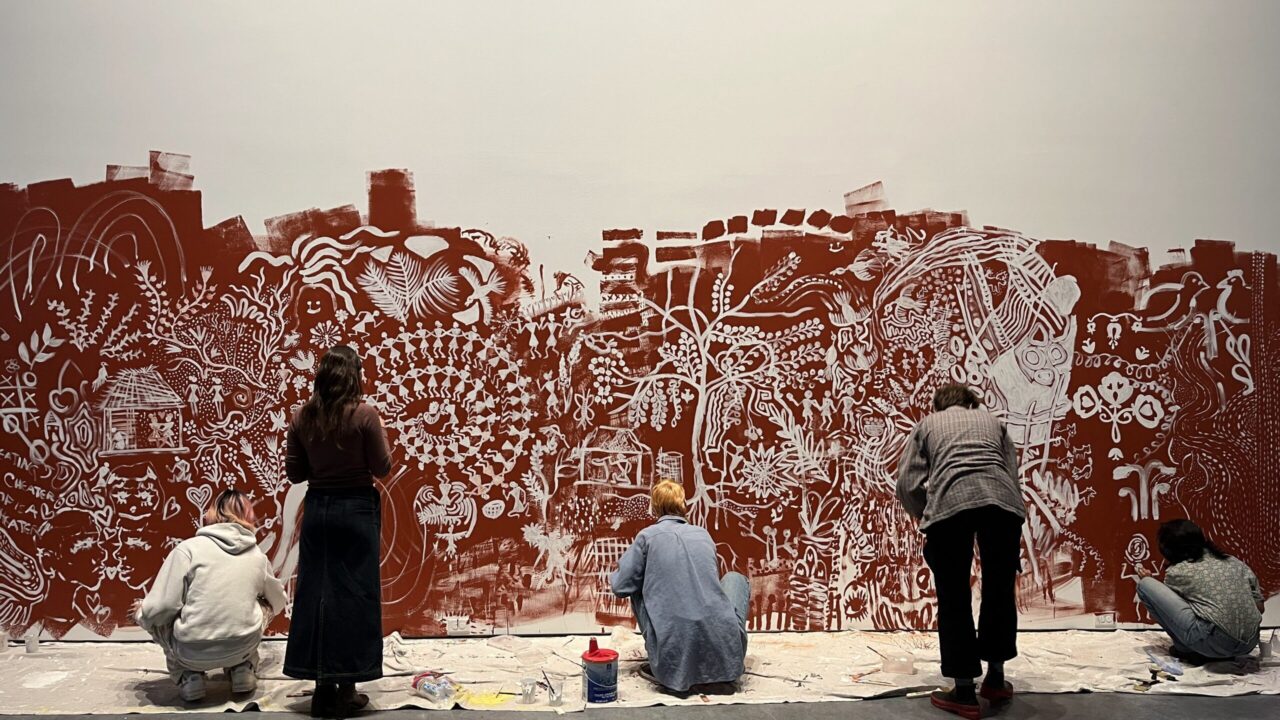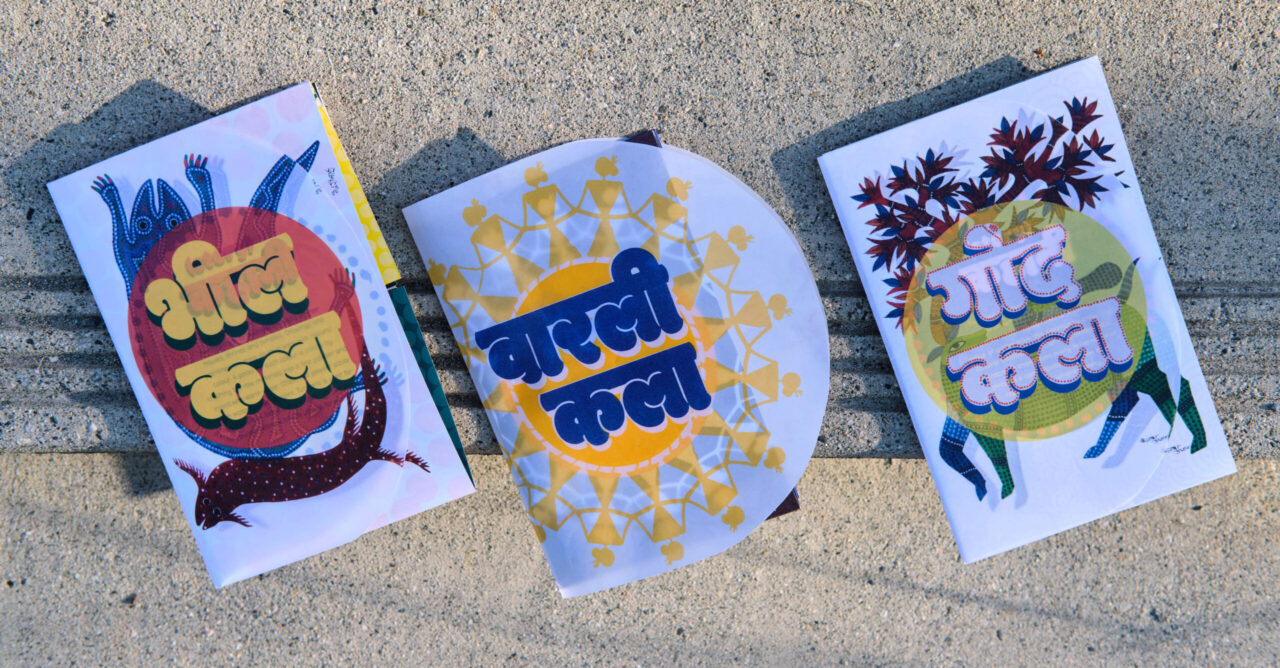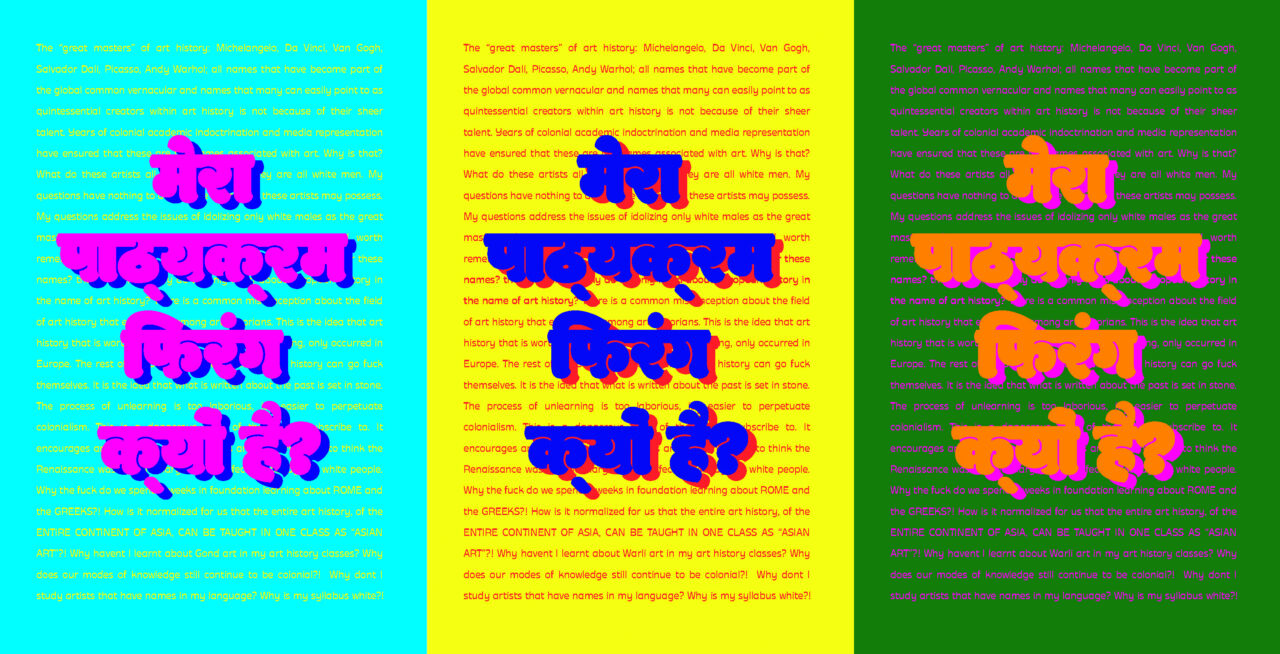Kashish Hukku Jani Receives Graduation Awards for Community Engagement + Anti-Racism and Social Justice

Kashish Hukku Jani at Emily Carr University in July, 2023. (Photo by Perrin Grauer)
Posted on
The recent alum was awarded for her project, कला, which envisions the decolonization of art history and pedagogy.
Kashish Hukku Jani (BDes 2023) has won the Emily Carr University Alumni Association Graduation Award for Community Engagement and the ECU Graduation Award for Anti-Racism and Social Justice.
The Communication Design major earned the recognitions for her capstone project, कला (which means “Art” in Hindi).
Kashish organized the ambitious project into four ‘phases,’ using Indian folk art as her means of exploration. Each phase interacts with or reflects upon an aspect of art history or pedagogy, envisioning its decolonization. In situating Indian folk art within these typically Eurocentric and colonial contexts, many of the biases woven into the fabric of Western art institutions are revealed.
During her first-year studies, Kashish says she became frustrated by the Eurocentric curriculum and its exclusion of artists of colour. While she recalls professors demonstrating an awareness of this Eurocentrism, there was no proposed solution or compensation. “Nothing was being done about it,” she says.

Participants paint in the style of Warli painting, an Indian art form, as part of the Art in the Flesh exhibition. (Photo by T. Kehler / courtesy Kashish Hukku Jani)
An opportunity to participate in a faculty exhibition at the Libby Leshgold gallery resulted in the earliest manifestation of कला. Sue Shon, an instructor Kashish credits with heavily influencing her approach to decolonization, encouraged students to share ideas for a gallery show.
As part of that show, called Art in the Flesh, Kashish invited participants to replace or obscure familiar works from the Western canon by painting directly onto projections in the style of Warli painting, an Indian art form. She also presented conceptual art that inserted Indian folk art into exclusive, elite, Eurocentric spaces. This was intended to decolonize the setting of an art gallery through an emphasis on community learning and engagement.
After the exhibition, Kashish continued to develop the idea of using community-building as a method for decolonizing spaces and structures. She once again invited her peers to take part in a group painting activity, this time in a classroom setting imagined as an alternative to core academic course Humanities 100. Participants conversed in a circle, discussing how artists of colour can occupy institutions that implicitly uphold white supremacy.

From Kashish Hukku Jani's Class Notes. (Photo by Odartey Aryee / courtesy Kashish Hukku Jani)
Spurred on by the success of the community-focused portions of her project, Kashish says she wanted to incorporate a more tangible application of her design skills. The result was three colourful pamphlets she calls Class Notes, each depicting and providing information about a different type of Indian folk art. कला isn’t solely a denouncement of Western art pedagogy and its colonial trappings; it also speaks to Kashish’s deep appreciation and admiration for the art serves as its inspiration.
Lastly, Kashish produced a text-based poster that features a ‘rant’ borne from her disdain for the exclusion of BIPOC-created and non-Western art. She says her time in the Emily Carr Students’ Union and her active role in the tuition-increase protests taught her speak up for the things she believed in. This final phase, titled Why is my curriculum white? and presented in vibrant Indian kitsch style, ties the project together with an emboldened articulation of the artist’s intent.

From Kashish Hukku Jani's Why is my curriculum so white? (Images courtesy Kashish Hukku Jani)
Despite its sprawl, Kashish says the project still doesn’t feel finished. She expects it to continue growing and expanding. She says glowing feedback from peers, professors and curators has been especially encouraging, providing a sense that she is onto something much bigger.
The support she received during the making stages was also invaluable. From fellow students that helped her to proofread to instructors like Sue Shon and Charlotte Falk who provided input, Kashish acknowledges that “all those little acts of community and helping each other were so integral to my project.”
--
Visit ECU online to learn more about studying Communication Design at Emily Carr University.